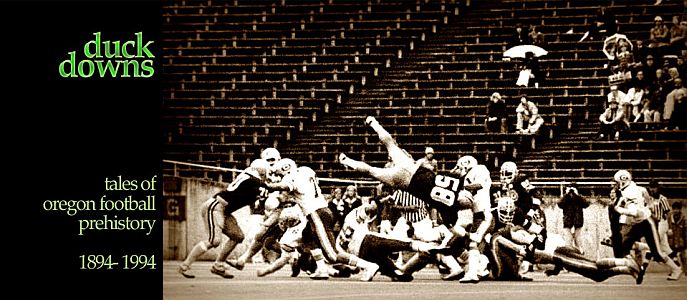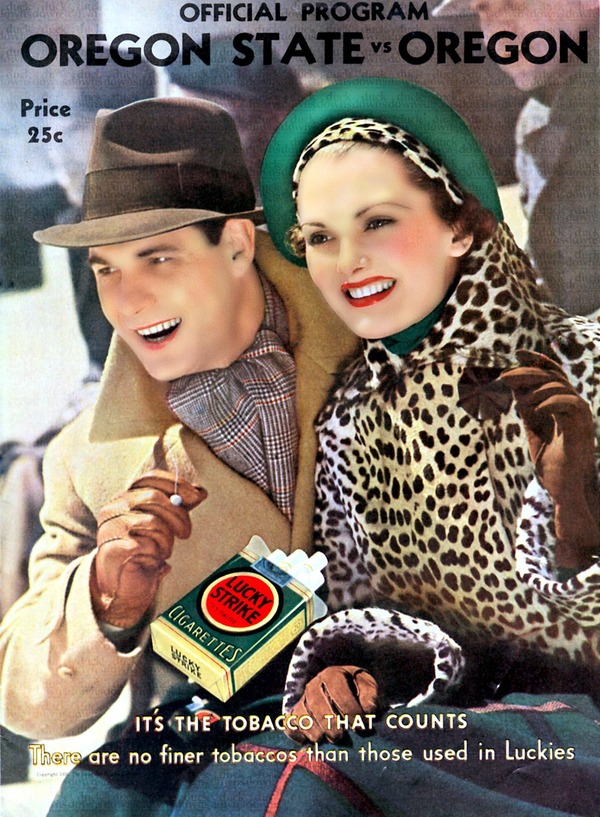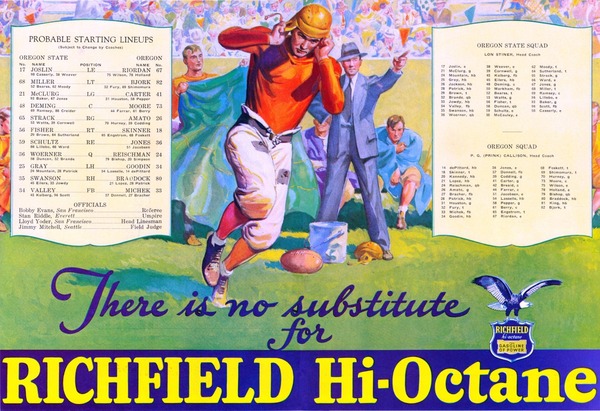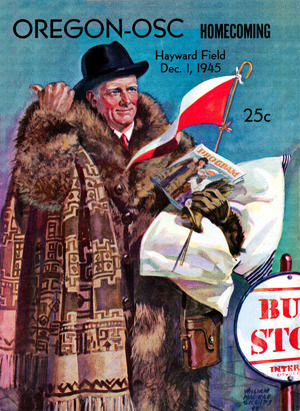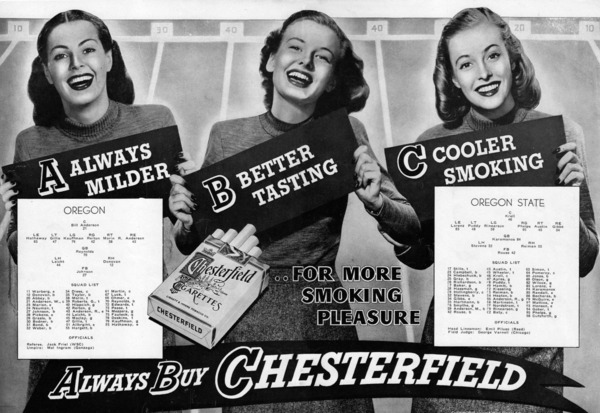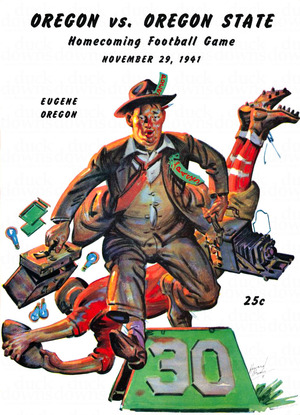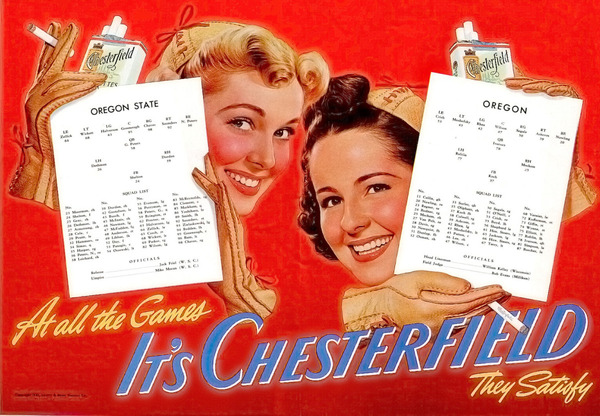November 9, 1935 -- OSC at Oregon
 January 28, 2012
January 28, 2012
With recent conference expansion requiring some changes in scheduling, there has been discussion of moving the Oregon State game earlier in the season, along with the other traditional rivalries. Cal/Stanford has become the first victim of logistics; the 2012 Big Game will not hold its customary final-weekend status. This change has been met with cries of anguish and disgust and sadness that “tradition,” the opiate of the mature college football fan, is being cast aside so that television can have its way.
Eventually, this rivalry game date shuffle will hit the Civil War. So it’s important to note that UO-OAC has not in fact always been the season’s final scheduled gridiron event; the final game setting only became fixed after WW2. Oregon would often finish its season in the pre-war era on a road trip to California, or even an extended journey by train to Florida or Louisiana. Post-war, the Civil War was set in stone as the last game of the season; after the last “post-season” roadie in 1941 resulted in a 71-7 loss to Texas, it’s easy to guess why.
Since WW2, only four times has Oregon vs Oregon State not finished the regular season: twice the team went to Hawaii, once to Miami, and once against USC in Japan (the “Mirage Bowl”, so named because as an Oregon bowl game, it was a mirage). So, when it finally happens again, and the Civil War is closer to a midseason event, it’s going to feel a little strange.
This program is from the 39th Civil War, the sixth game of 1935, the last year of an extended era when “Civil War” and “end of season” were not synonymous. Prink Callison’s team had struggled a bit, pitching three shutout wins but losing to Cal 6-0 and, the weekend before, hammered 33-6 at eventual conference co-champion UCLA. Still, even though the Webfoots had a brilliant 9-1 season in 1933, and hadn’t lost to OSC in years, this Homecoming game was expected to be the first Hayward Field sellout since… well, since the last OSC game at Hayward, in 1931. (The game had been played in Portland the last two seasons.)
As usual, the media fell over itself complimenting the game play on the field.
“Oregon’s crushing football machine … playing the driving game of a championship eleven … one of the most dramatically thrilling gridiron classics ever seen here …”
— Bill Phipps, Register-Guard Sports Editor, 11/10/1935
Beaver coach Lon Stiner’s inexplicable plan to start his second team blew up in his face, as his halfback Bob Mountain fumbled on the second play from scrimmage; six runs later, Oregon had the winning points in a 13-0 game. The Ducks finished the 1935 season at 6-3 – Prink Callison’s last winning season; by 1938 he would be retired from coaching, operating the venerable Lucky’s Club Cigar Store and Tavern in downtown Eugene.
The Register-Guard by 1935 had begun tallying semi-reliable game statistics. Translating these to modern layout standards is a good indicator of how far the game has progressed in the “modern era.” Nowadays you’ll find middle school first-year-in-pads teams with better numbers than this.
|
|
OSC |
Oregon |
|
Rushing |
15 carries, 76 yds |
40 carries, 116 yds |
|
Passing |
5-16-3, 58 yds |
1-6-3, 9 yds |
|
First downs |
5 |
5 |
|
Total plays |
31 |
58 |
|
Total offense |
134 |
125 |
|
Punts |
10 / 40.8 avg |
10 / 42.7 avg |
|
Penalties |
3 / 15 yds |
1 / 15 yds |
|
Fumbles |
2 |
0 |
It’s safe to say that the passing game hadn’t exactly caught on yet in college football, at least out West.
Program Notes
- To my knowledge this is the only time the entire front cover of an Oregon game program has been sponsored by any advertiser. Tobacco hustling would never get more blatant than this. (Does any smoker actually have teeth that white?)
 college football programs in
college football programs in  1935,
1935,  Oregon St
Oregon St 